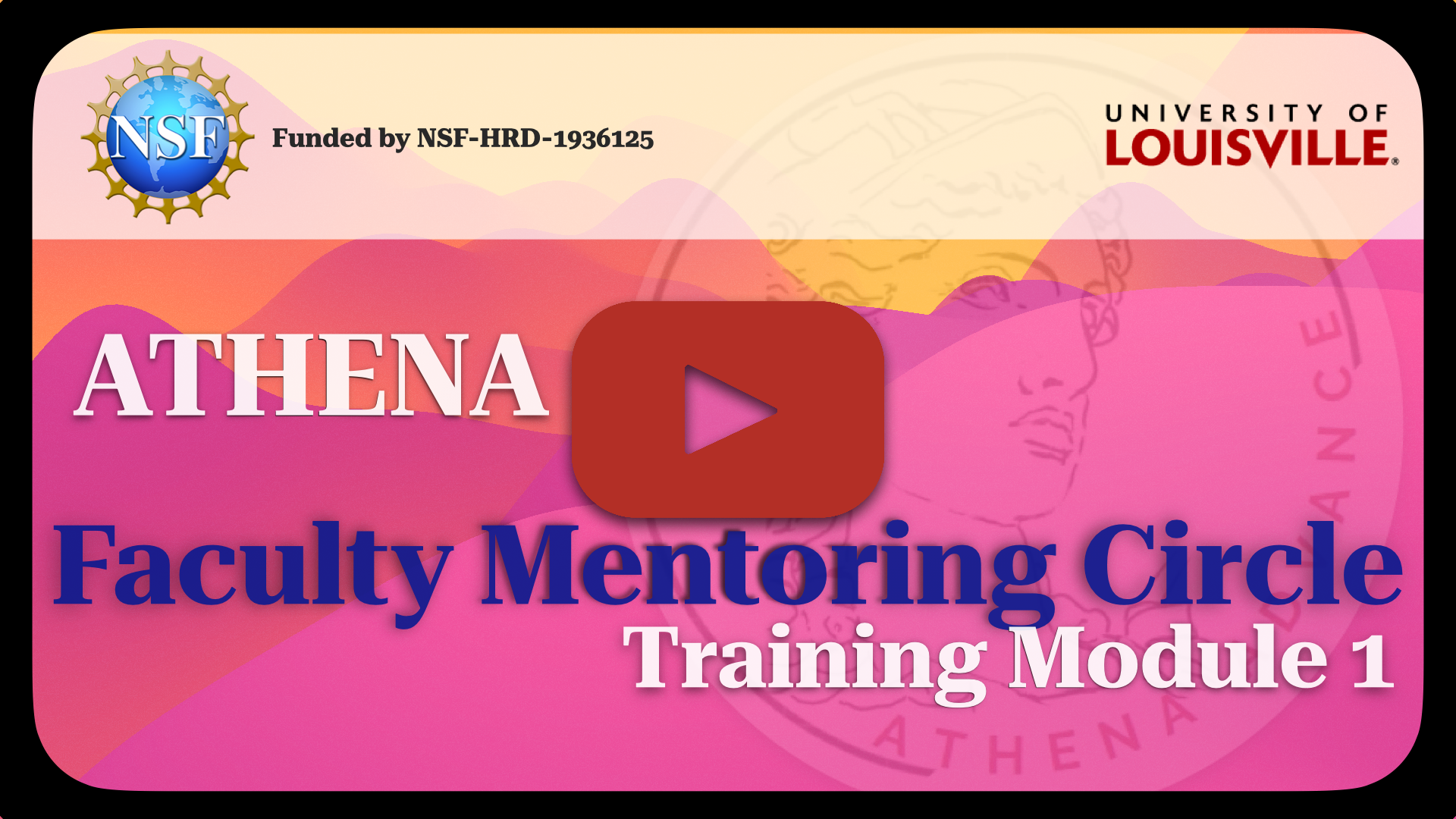ATHENA Faculty Mentoring Circle Training Module 1
Introduction to ATHENA Peer/Near-Peer Mentoring Circles
ATHENA Peer/Near-Peer Mentoring Circles are modeled on the success of the peer group from the book ”Every Other Thursday: Stories and Strategies from Successful Women Scientists”. Chapter 16, “A Group of One’s Own: Pigs, Contracts and Strokes” contains details of the terminology and process describing how the group operates. The overall goal of the circle is to extend and foster your peer mentoring, coaching and networking experience. In particular, the circle is a forum to support others in finding workable solutions to problems and in staying connected.
ATHENA circles integrate the best elements of both the traditional peer mentoring circles and peer coaching, while adjusting the structure to our context at UofL. The legacy circle model was also adapted to a hybrid mode, with virtual/online meetings and occasional in person meetings once a semester.
Mentoring Circles meetings follow a structured format designed to maximize productivity and support. Each meeting typically lasts between 1 and 2 hours, depending on the frequency of meetings (biweekly or monthly).
1. Positive Affirmations (5 minutes):
The meeting starts with a round of positive affirmations, where members share something positive that's happening in their lives. This could be a personal achievement, successful updates, or simply something they're grateful for.
2. Group Work (60-75 minutes):
This is the core of the meeting where circle members work together to support one another.
Members with problems to work on will take turns leading the Group Work.
When it's your turn to “work,” clearly articulate a specific challenge or problem.
State your goals: What do you hope to achieve or learn from this discussion?
Specify the feedback you're seeking: Are you looking for advice, support, or new perspectives?
The group will engage in active listening and ask clarifying questions to better understand the problem context. Avoid jumping to solutions or strategies initially.
Encourage personal agency: Help the individual determine their own next steps based on the insights gained.
Offer specific solutions as a last resort: Only provide solutions if explicitly requested by the individual.
Create a contract: At the end of the Group Work, the member should make a brief contract to report back on in a future meeting.
3. Strokes (2 minutes):
The circle concludes with a round of “Strokes,” which are positive observations or praise about someone that usually stems from the work in that meeting.
This is a great way to acknowledge and appreciate each other's contributions.
By following this structured format, Mentoring Circles can provide a supportive and productive environment for members to learn, grow, and achieve their goals.
What are the Benefits of Participating in Mentoring Circles?
According to an external evaluation, our ATHENA circles have had a significant impact on faculty, including:
Supporting career advancement
Building problem-solving skills
Empowering and enabling their actions
Reducing isolation
Improving a sense of belonging
By participating in our circles, you'll have the opportunity to:
Build strong relationships with your peers
Gain valuable insights and perspectives
Enhance your professional development
Support others in their growth and success
We hope this short training Module has provided you with a clear understanding of University of Louisville’s ATHENA Peer/Near-Peer Mentoring Circles. We encourage you to join a circle and experience the benefits firsthand.

